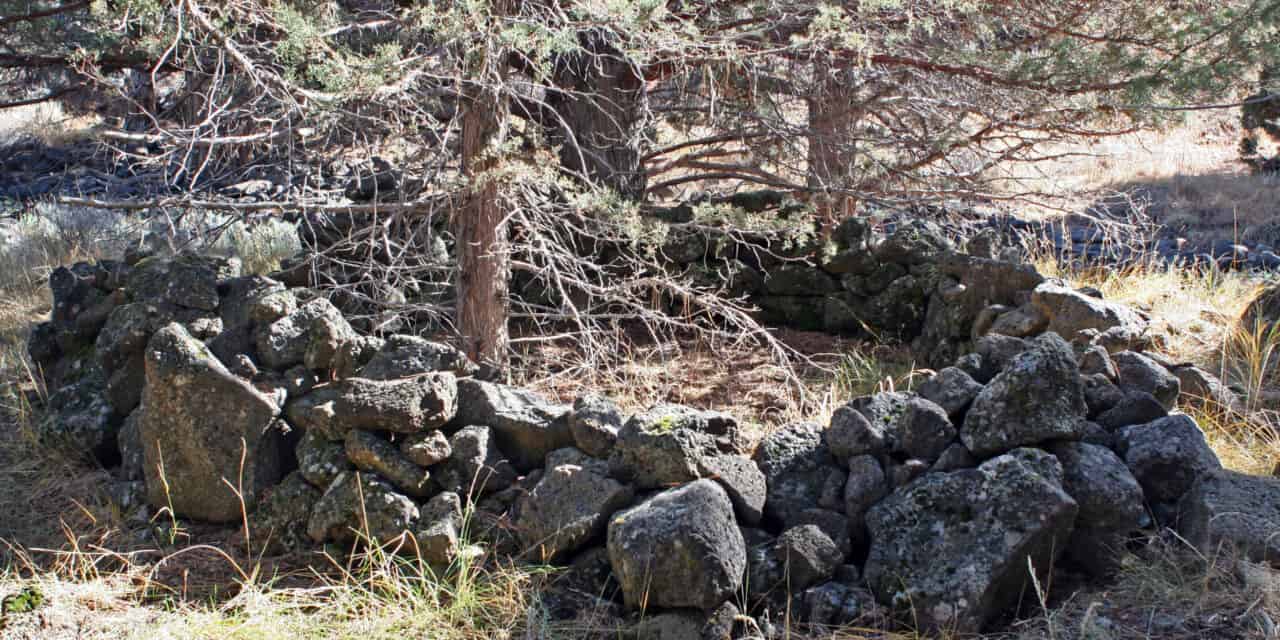Native Fish Traps
Story and Photos by Stacy Fisher
History records that several distinct tribes made up the group known as the Ahjumawi, pronounced “ah-choo-MA-wee,” or Pit River Indians, the original people of Northeastern California. The name Ahjumawi means: “where the waters come together” in the Ahjumawi language, also translated simply as the “River People.”
The various tribal bands occupied parts of Shasta, Modoc, Siskiyou, and Lassen Counties as long as 5,000 years ago, archeological evidence suggests. Many of their descendants continue to reside in those regions to this day.
Long before white settlers occupied the region, the Aparuge tribe, a band closely associated with the Pit River Indians had a primary village along the bank of Pine Creek, a main tributary to Eagle Lake; and also shared territory with the Maidu, Paiute and other Pit River Indians.
Utilizing techniques past down with each generation, they developed an ingenious number of fish traps consisting of dozens of stacked lava stones constructed in a circle.
This method allowed for the impoundment of trout and other species of fish when water temperatures and flows were adequate during upstream migration to spawn from the lake and into Pine Creek, particularly in the early spring when Eagle Lake Trout or Naht’ tâye in Aparuge.
An opening on one side of this circular fish trap was closed with a keystone to confine fish inside.
In the early 1930s an Aparuge tribesman was quoted in a local newspaper, saying: “When the trout are running, you can wade into the water and catch with just your hands all the fish a man will want,” adding that It was not unusual for an outing to take one hundred fish or more from a given stone-built trap. Individual specimens weighed up to 7 pounds each, academics estimate.
Understandably, managing a fishery was of vital importance to the native Pit River Indians, providing sustenance over countless generations.
The Aparuge were known to collect hundreds of pounds of fish for immediate feasting, according to information provided by the Forest Service posted on a kiosk at the Pine Creek site. An additional number of catch were dried to provide meat for winter consumption.
The trap was reopened and the remaining fish were allowed to resume their spawning once an adequate supply was harvested.
Women and men joined together say researchers, scooping out fish from within each trap with their hands or using spears or basket scoops to capture them.
After the trout run ended, native peoples also gathered the eggs of the great numbers of waterfowl that nested in the region, and also used their feathers for decoration.
In addition, local Native Americans used elderberry, a dark purple berry packed with antioxidants and vitamins, as well as Manzanita and sage for a variety of uses, such as medicine and material for clothing.
The California Department of Parks and Recreation, California State Parks Division is working with native tribes to preserve the unique stone traps.
Visitors to these sites must avoid disturbing the traps, warn officials, as they are protected places.
Anyone interested in more information on the Pit River Indians can go to Pitrivertribe.org













